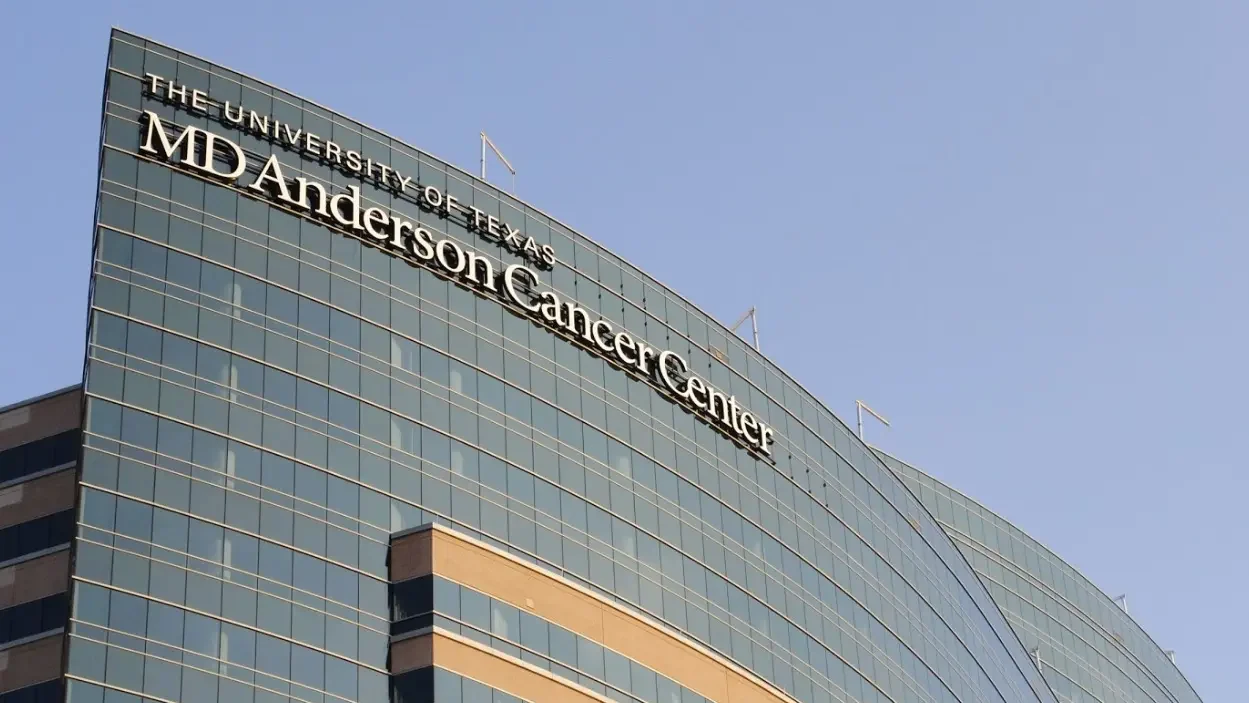
MD Anderson Cancer Center’s Research Highlights
The University of Texas MD Anderson Cancer Center’s Research Highlights showcases the latest breakthroughs in cancer care, research, and prevention. These advances are made possible through seamless collaboration between MD Anderson’s world-leading clinicians and scientists, bringing discoveries from the lab to the clinic and back.
Recent developments at MD Anderson offer insights into a lower-intensity therapy combination for older patients with acute myeloid leukemia (AML), a novel T cell therapy for patients with bone marrow failure syndromes, a proof-of-concept study using MRI to detect metabolic changes inside tumors, a molecular target to overcome treatment resistance in patients with chronic myelomonocytic leukemia (CMML), and presurgical targeted therapy to improve outcomes for patients with triple-negative breast cancer.
Lower intensity triplet combination offers favorable outcomes in older patients with AML
Despite improvements in treatment options for older patients diagnosed with acute myeloid leukemia (AML), long-term survival remains poor in this population.
To provide insights, researchers led by Tapan Kadia, analyzed survival outcomes of older patients receiving a triplet combination of venetoclax, cladribine and low-dose cytarabine, followed by allogeneic stem cell transplantation (SCT).
They compared results from a Phase II clinical trial to those of a retrospective cohort of older patients who underwent SCT after intensive chemotherapy. The two-year relapse-free survival rate was superior in patients receiving the triplet combination (88%) compared to those receiving SCT and intensive chemotherapy (65%). The overall survival rates for both groups were comparable, at 84% and 70%, respectively.
These results suggest that the lower-intensity combination could offer superior long-term survival outcomes, including the possibility of SCT without high-intensity regimens. While the trial evaluated patients aged 60 and older, the researchers suggest it could be applied to a broader population.
Learn more in Cancer.

Cell therapy shows promising efficacy in patients with refractory bone marrow failure
Patients with aplastic anemia, myelofibrosis and myelodysplasia have an inflammatory bone marrow environment that can lead to bone marrow failure syndromes. T regulatory (Treg) cells often are decreased and defective in aplastic anemia, and adoptive therapy with Tregs has been shown to reverse bone marrow failure, suggesting its therapeutic potential.
In a Phase I clinical trial led by Tapan Kadia, researchers infused a single dose of CK0801 – an allogeneic, umbilical cord blood-derived Treg cell therapy – in nine patients with aplastic anemia, myelofibrosis or myelodysplasia who experienced poor responses to prior lines of therapy.
The overall response rate at 12 months was 67%, with 75% of patients with aplastic anemia achieving a partial response. These results provide proof of concept that targeting inflammation with T cell therapy is safe and can improve outcomes for patients with refractory bone marrow failure.
Learn more in NEJM Evidence.
First-in-human hyperpolarized MRI enables clinical analysis of tumor metabolism
Metabolic shifts within tumors may be predictive of treatment response as well as tumor aggressiveness, but clinical translation is limited due to the inability to precisely monitor these shifts. In a first-in-human study led by Stephen Lai, researchers demonstrated the potential of hyperpolarized magnetic resonance imaging (HP-MRI) to assess these shifts in a patient with oropharyngeal squamous cell carcinoma.
Using a hyperpolarized carbon 13 pyruvate tracer, the researchers were able to measure intra-tumoral metabolic shifts with high resolution, and the test-retest reproducibility showed strong potential for clinical translation. With this successful proof of concept, researchers now are evaluating how to scale up HP-MRI for use in patients prior to and during treatment to enable adaptive treatment strategies.
Learn more in JAMA Otolaryngology-Head and Neck Surgery.

RAS pathway insights lead to potential therapeutic target for leukemia subtype
Patients with chronic myelomonocytic leukemia (CMML), a type of blood cancer, often are treated with hypomethylating agents (HMA). However, those patients harboring RAS mutations often develop treatment resistance and have a high risk of progressing to acute myeloid leukemia (AML).
In an effort to understand the underlying mechanisms, researchers led by Simona Colla, found that RAS mutations induce inflammatory signal pathways and cause gene expression changes in hematopoietic stem and progenitor cells, which expand at disease progression after HMA therapy.
These cells also rely on the anti-apoptotic MCL1 protein, which prevents cell death, for their survival. The results provide insights into why some patients with CMML don’t respond well to treatment and suggest targeting MCL1 as part of a combined therapeutic approach could overcome treatment resistance and improve outcomes for patients with RAS-mutated CMML.
Learn more in Cell Reports Medicine.

Combination treatment improves outcomes and highlights predictive biomarkers for triple-negative breast cancer subset
Patients with triple-negative breast cancer (TNBC) are treated with neoadjuvant, or presurgical, chemotherapy with or without immunotherapy, but not all patients benefit. Targeted therapy with androgen receptor (AR) blockade has improved responses and survival in some patients, but it remains unclear which characteristics determine treatment.
In a Phase II study, researchers led by Bora Lim, combined the AR inhibitor enzalutamide with paclitaxel chemotherapy as secondary neoadjuvant treatment in 24 patients with luminal AR (LAR)-enriched TNBC. Four patients (17%) achieved a pathological complete response and six (25%) had residual cancer burden-I (minimal burden), resulting in a response rate of 42%, exceeding historical rates of 5-20%.
None of the patients experienced serious side effects. The researchers also identified AR-responsive gene sets that could be predictive biomarkers for treatment response. The results showed that the combination is effective and safe to induce a response before surgery for patients with early-stage LAR-enriched TNBC.
Learn more in Cell Reports Medicine.

Awards and honors
- Giulio Draetta, M.D., Ph.D., chief scientific officer, was awarded the 2024 Prize for Scientific Excellence in Medicine by the American-Italian Cancer Foundation (AICF)
MD Anderson at ASCO 2024
Highlights from MD Anderson at the 2024 American Society of Clinical Oncology (ASCO) Annual Meeting. More information can be found here.
- ASCO: Proton therapy demonstrates advantages in Phase III head and neck cancer trial
- ASCO: Novel targeted cancer therapies demonstrate activity and safety in metastatic solid tumors
- ASCO: Novel CAR T therapy and shorter targeted therapy durations show promise for patients with leukemia
- ASCO: MD Anderson’s Sharon Giordano and Richard Gorlick honored as 2024 Special Awards Recipients
- MD Anderson Research Highlights: ASCO 2024 Special Edition
Other posts featuring MD Anderson Cancer Center.
